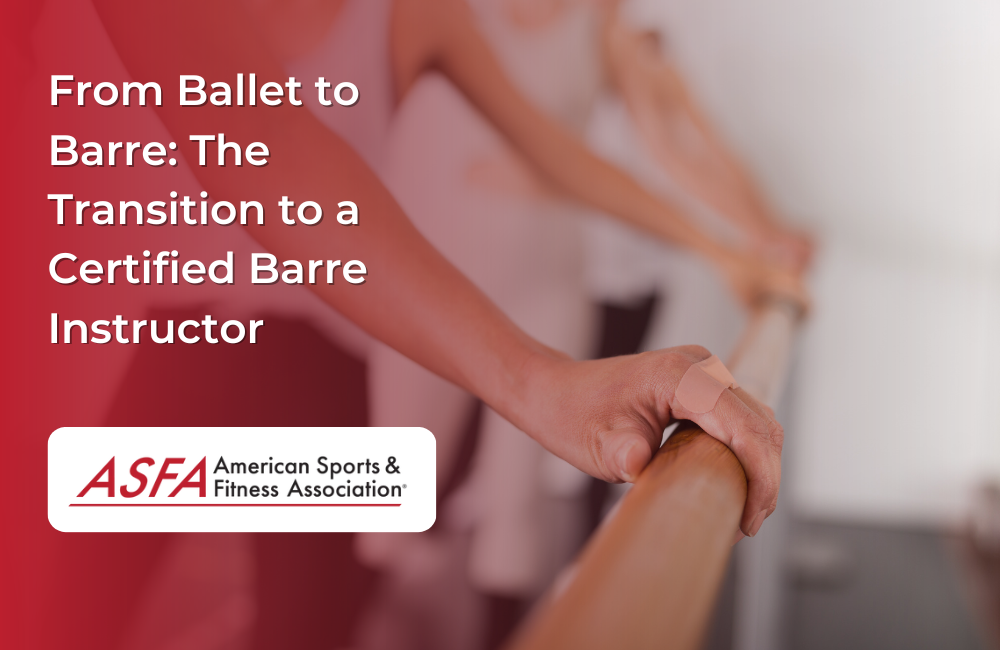For those with a background in ballet or a love for dance and fitness, the transition to becoming a certified Barre Instructor can be a natural and fulfilling career move. Barre, a fitness regimen inspired by ballet, Pilates, and yoga, has gained immense popularity in recent years for its effective full-body workouts and graceful movements. If you're considering making the leap from ballet to Barre, this article will guide you through the process of becoming a certified Barre Instructor and why it can be a rewarding career choice.
The Synergy Between Ballet and Barre
Ballet and Barre share a deep connection, making the transition from one to the other relatively seamless. Here are some reasons why your ballet background can be a strong foundation for becoming a Barre Instructor:
1. Dance Foundation: Ballet provides a solid foundation in dance technique, posture, and grace. These skills are highly transferable to Barre, where poise and fluidity are essential.
2. Muscle Awareness: Ballet dancers have a strong sense of body awareness, understanding how different muscle groups work. This knowledge is valuable when teaching Barre exercises that target specific muscles.
3. Core Strength: Ballet places a significant emphasis on core strength and stability, a fundamental aspect of Barre workouts.
4. Flexibility: Ballet promotes flexibility and range of motion, which are key components of Barre training.
Steps to Becoming a Certified Barre Instructor
To make the transition from ballet to Barre and become a certified Barre Instructor, follow these steps:
1. Self-Assessment: Assess your interest and passion for Barre. Explore Barre classes to ensure it aligns with your fitness and teaching goals.
2. Research Certification Programs: Look for reputable Barre Instructor certification programs. Many programs offer both in-person and online options, allowing you to choose based on your preferences.
3. Enroll in a Program: Enroll in the certification program of your choice. This will involve coursework on Barre techniques, anatomy, teaching methodologies, and more.
4. Practice Teaching: Practice your teaching skills by leading friends, family, or fellow dancers through Barre exercises. This hands-on experience is crucial for gaining confidence as an instructor.
5. Complete Certification Requirements: Fulfill all requirements of the certification program, which may include written assignments, practical assessments, and a final exam.
6. Pass the Exam: Successfully pass the certification exam to demonstrate your proficiency in Barre instruction.
7. Obtain Your Certification: Once you've met all the requirements, you will receive your Barre Instructor Certification.
Benefits of Becoming a Certified Barre Instructor
Transitioning from ballet to Barre and becoming a certified Barre Instructor can bring a range of benefits:
1. Personal Fulfillment: Teaching Barre allows you to share your passion for movement and fitness with others, which can be highly rewarding.
2. Flexible Career: You can choose to work at fitness studios, gyms, or even start your own Barre classes, providing flexibility in your career.
3. Health and Wellness: Barre instruction promotes holistic health and wellness, helping individuals improve strength, flexibility, and posture.
4. Positive Impact: As an instructor, you can positively impact the lives of your clients, helping them achieve their fitness goals and boost their confidence.
5. Diverse Clientele: Barre classes attract a diverse clientele, allowing you to work with people of various fitness levels and backgrounds.
Conclusion
The transition from ballet to Barre and becoming a certified Barre Instructor can be a fulfilling and natural progression. Your background in dance, coupled with the right certification program, will equip you with the skills and knowledge to lead engaging and effective Barre classes. Embrace the opportunity to inspire others to lead healthier lives through the grace and strength of Barre, and embark on a rewarding career journey in the world of fitness and wellness. 




